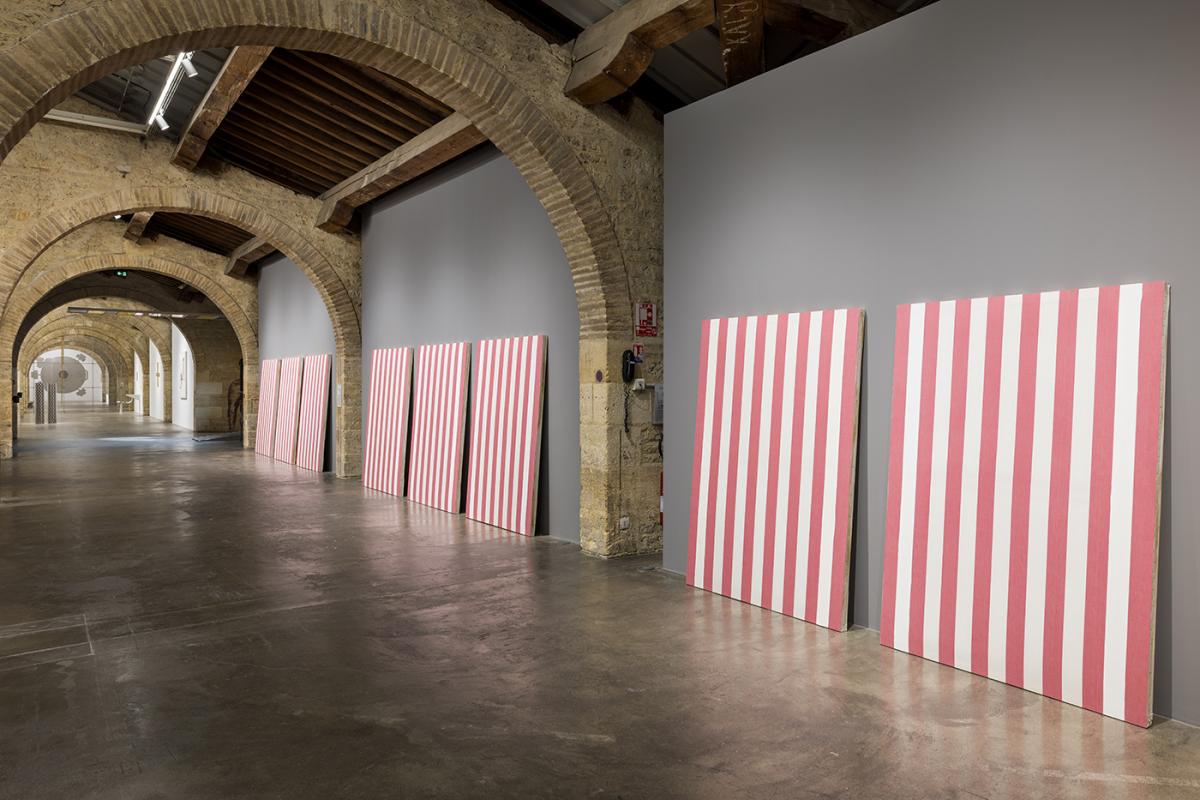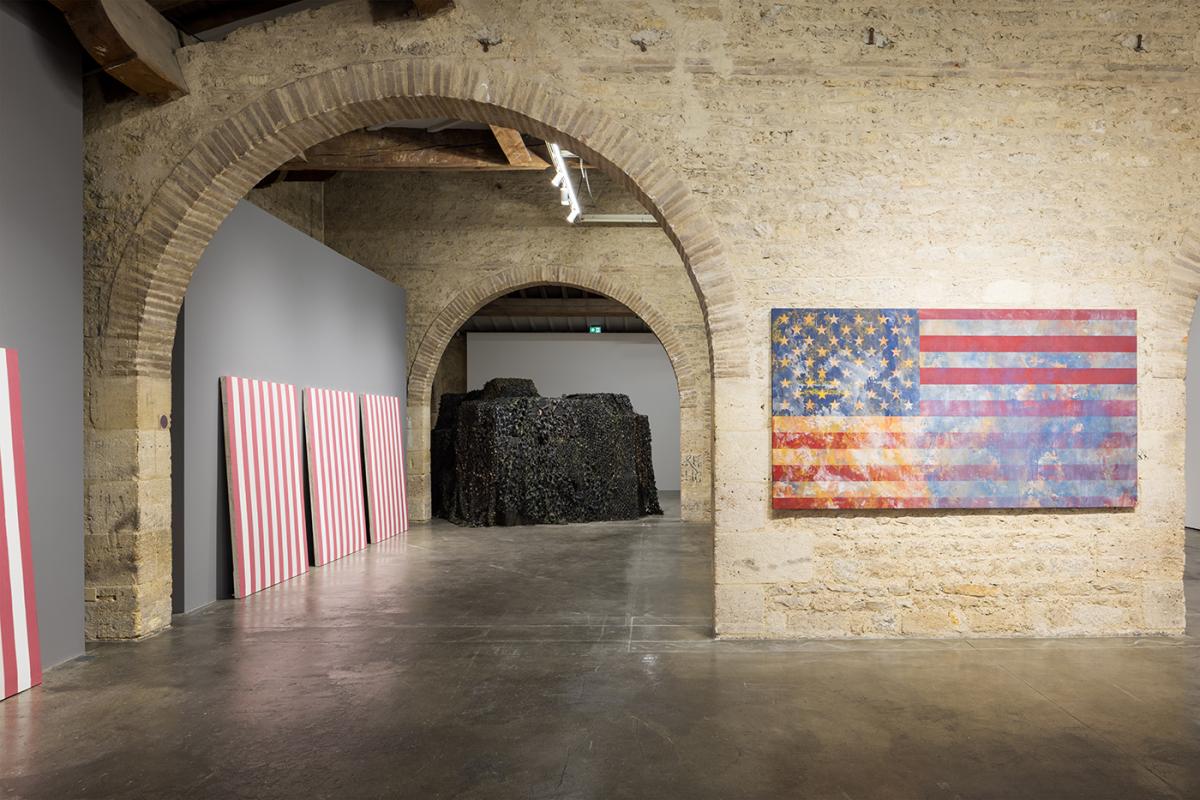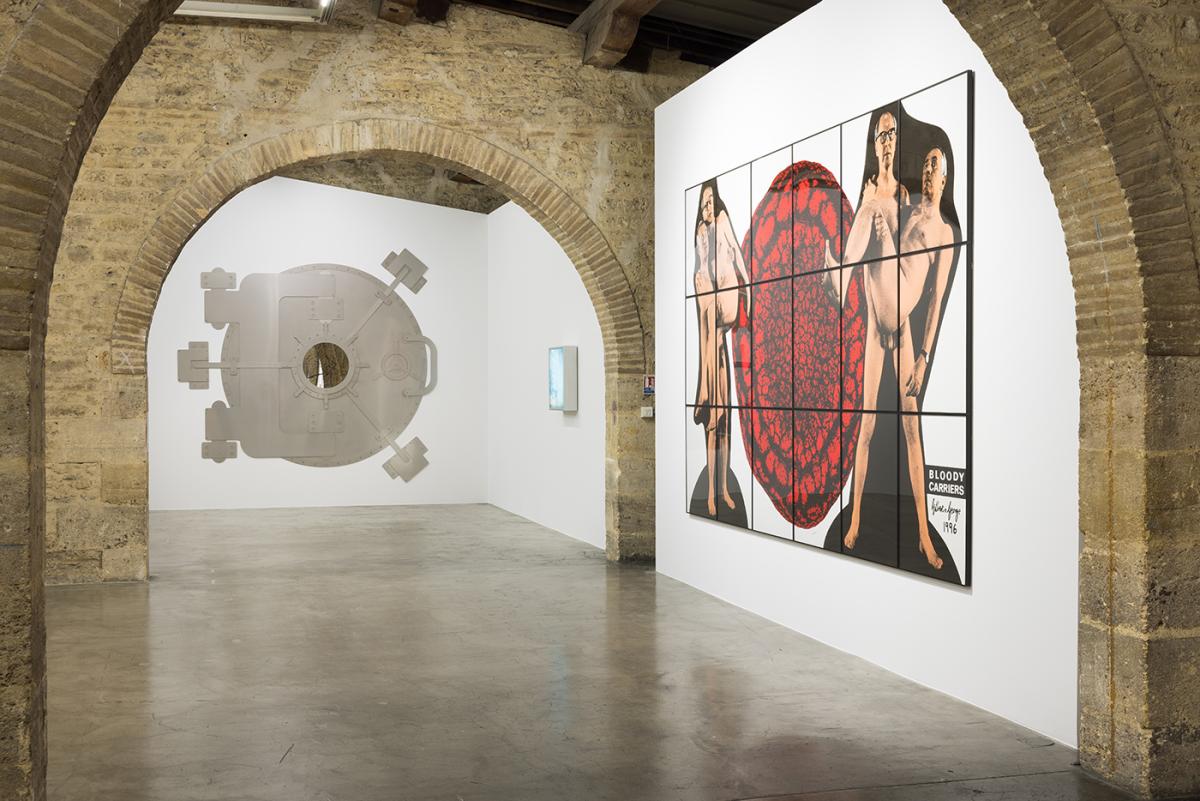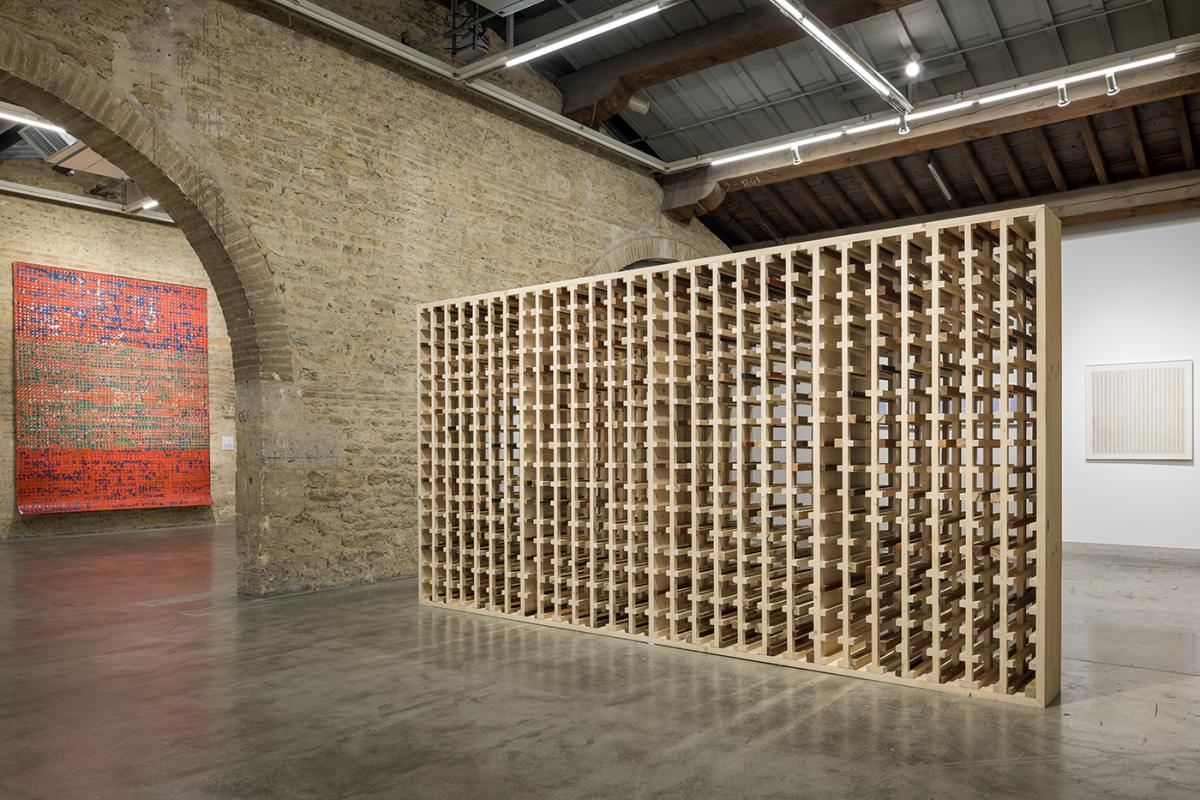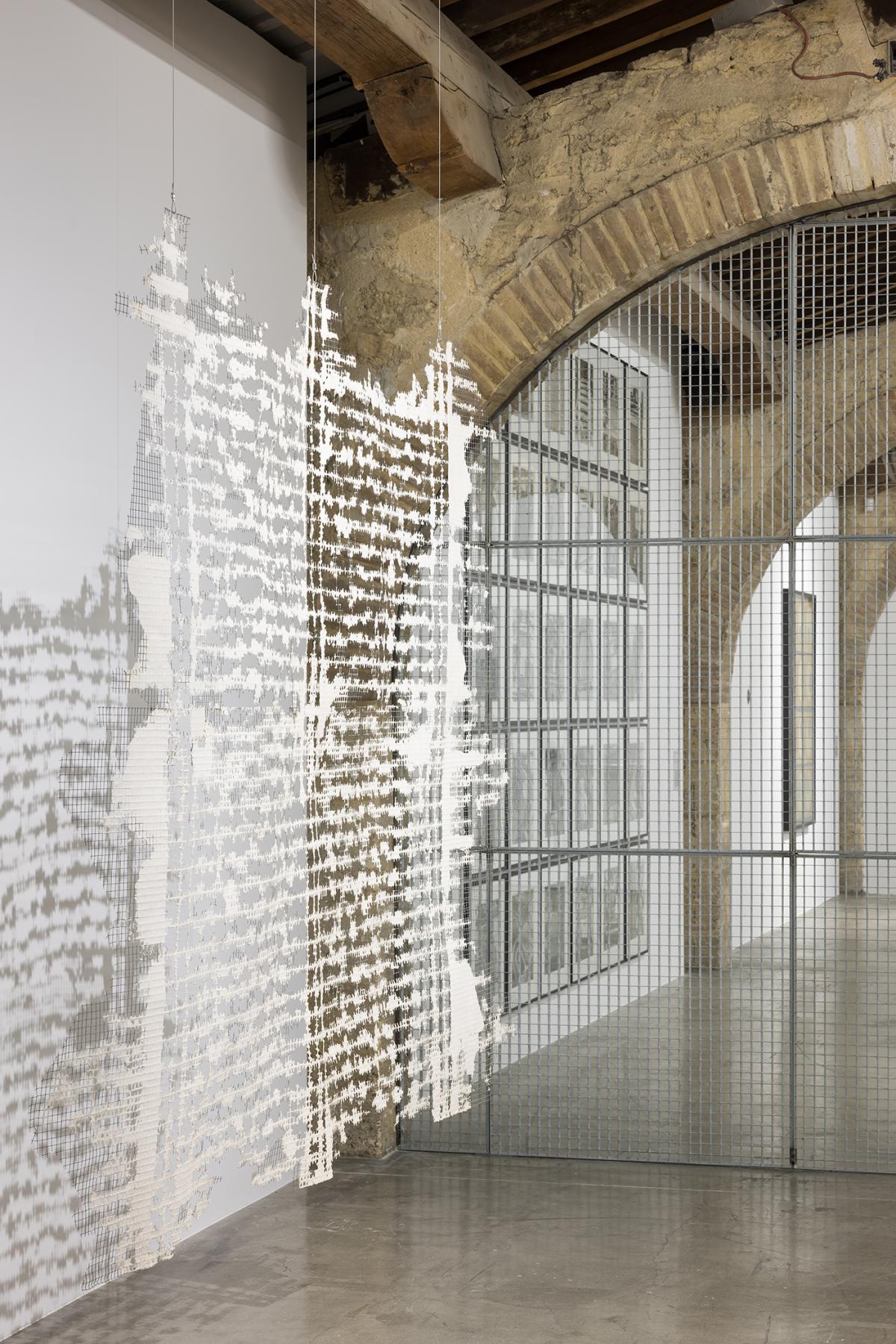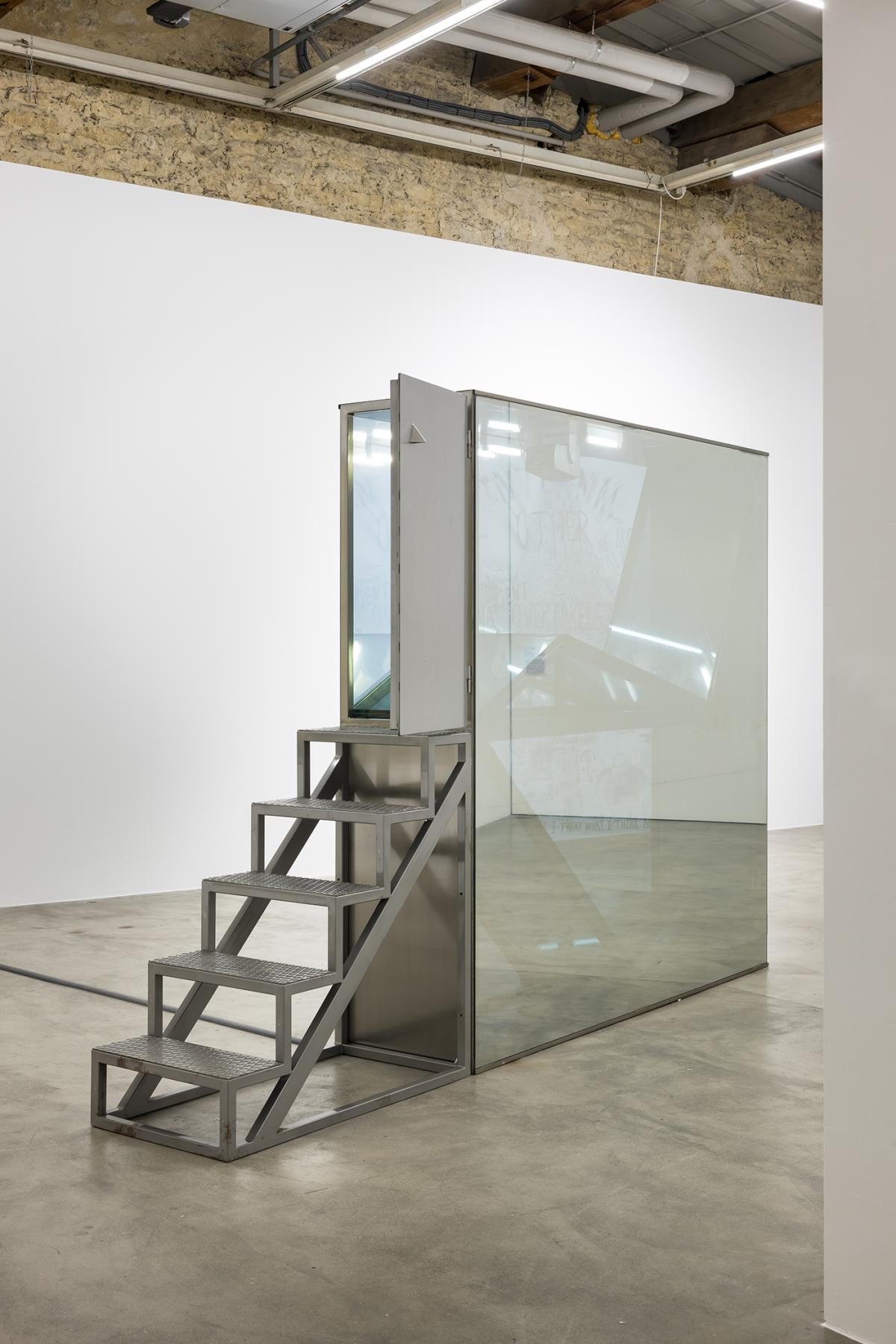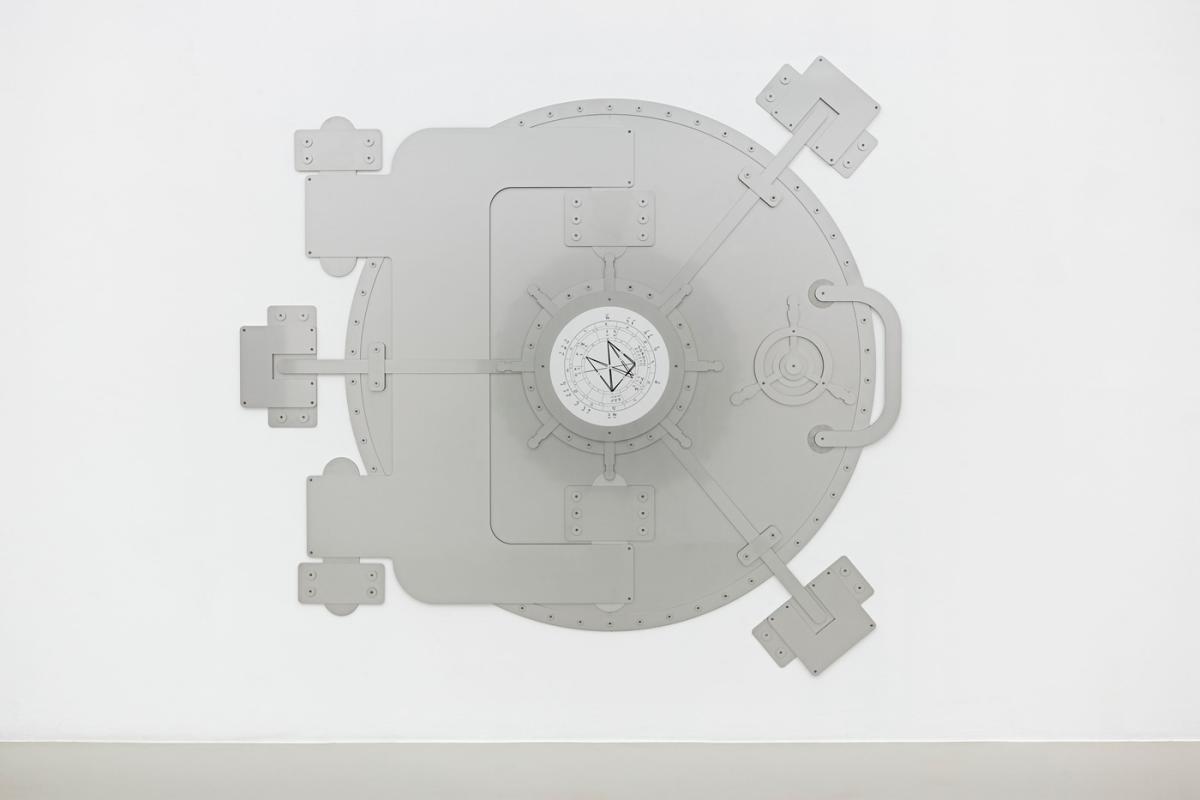07.04.23 - 05.01.25
07.04.23 - 05.01.25
07.04.23 - 05.01.25
After Around the Day in 80 Worlds, this second collection narrative focuses on the motif of the grid, taken up by artists since the early 20th century.
Curator: Cédric Fauq
6€ / 3,50€, reduced rate / 2€, Students
In "Grids", an essay penned in 1979, American art critic and historian Rosalind Krauss writes:
"Surfacing in pre-War cubist painting [...], the grid announces [...] modern art's will to silence, its hostility to literature, to narrative, to discourse."
Which is to say that the grid — and its main component, the line — have been favoured by artists who refused the subject as origin or ordering concept, in a quest for rationality that would evacuate the excessive subjectivism of poetry — to reach the universal.
A grid, however, stands but as a façade of neutrality and silence; as a motif, it is unmediatedly ideological — an antinatural symbol of order, it constrains rather than liberates.
In Seeing like a State: How certain schemes to improve the Human Condition have failed (1998), James C. Scott argues that the motif of the grid is rooted in the elaboration of systems such as units of measurement, language, notions of property and time. He shows the grid to be a fundamental tool for measuring, controlling and normalising populations – all such processes being vital to the constitution and durability of state and military power.
It is in this critical light that Systemic Love approaches the grid – showing how artists have tackled, not only the motif, but also its underlying ideology, with grids that close and enclose (Présence Panchounette, Takako Saito); featuring, simultaneously, artists that have tried to unravel the very meshes of the grid (Anne-Marie Pécheur), to imbue it with other functions or values (Mona Hatoum, Olu Ogunnaike) — or to contaminate (Pierre Barès, Gilbert & George) or atomise it (Jean-Pierre Raynaud). Other artists of the exhibition problematise our relationship to time (Daniel Buren, On Kawara, Irma Blank), as we first experience time through the grid of the calendar.
The focus of this collection narrative lies on the relationship between grid and subjectivity; hence, the relevance of some featured artists who do not work with grids as motifs but embody a certain rebellious attitude against all establishment (Wolfgang Tillmans, Nan Goldin and Dan Graham).
The main plot of the exhibition can then be formulated as follows: if the grid is a symbol of order and norm, what kind of emotional relationship can we form with it? Is such a relationship even desirable? And, if not, how can we break away from it?
In the present context, one of the systems of most particular import is that of the museum, which is also made out of grids; with, notably, the gridlike racks used to stock up the works collected in the storerooms. Some of the works presented in Systemic Love focus on the very functioning of museums as institutions (Danayita Singh), seeking to imbue these processes with a sense of identity (Philippe Thomas, Clémence de la Tour du Pin).
Vietnamese and German artist Sung Tieu has been invited to contribute to this collection narrative by entering in a dialogue with the works collected at the Capc, intervening directly on the architectural structure of the galleries. Sung Tieu’s practice builds upon the relationship between form, aesthetics and ideology. One of her recurring tactics is to repurpose carceral furniture into exhibition artefacts, casting a jarring light on the connection between minimalist aesthetics and systemic oppression.
Sung Tieu is even more interested in the motif of the grid because of its omnipresence in textiles (as found in the works of Claude Lagoutte and Leonor Antunes), and because of its importance in the military and diplomatic approaches to territory, as a tool to construct and manifest borders. Military violence is addressed in pieces by Chohreh Feydjzou, Danh Vô and Thierry Mouillé
With Systemic Love, a perspective also opens on stars (David Boeno, Michel Gérard) and astrology, constructed as the locus where broadly accepted epistemological methods meet with other, more readily questioned belief systems. Sung Tieu first became involved with astrology and its graphical manifestation as birth charts in 2020, after reading an essay by philosopher Theodor Adorno entitled The Stars Down to Earth: The Los Angeles Times Astrology Column.
For this exhibition, Sung Tieu has selected one of her most important pieces in recent years: a metal bas-relief shaped like the door of a safe. On a mirror-like surface inlaid at the centre of the piece, an astral chart of her mother at the time she crossed the border between the Czech Republic and Germany has been engraved. The mother was accompanied by the artist, who was then 5 years old.
Other astrological charts engraved on metal have been commissioned specifically for the exhibition: they show the birth chart of some of the featured artists. Finally, to encompass all the rooms of Systemic Love in common reverie, an ambient soundtrack was conceived by Sung Tieu in collaboration with Alexis Chan.
During the course of the exhibition, three "Plot Twists" will take place in October 2023, April 2024, and October 2024; some works will give way to others (for conservation reasons), while Sung Tieu's various interventions will shift in focus. A symposium will be organised by the Capc to conclude this exhibition narrative in late 2024.
Curators: Cédric Fauq and Anne Cadenet.
With : César Andrade, Leonor Antunes, Pierre Barès, Irma Blank, David Boeno, Jean-Pierre Bruneaud, Daniel Buren, capcMusée d’art contemporain (Philippe Thomas), Nicole Eisenman, Chohreh Feyzdjou, Michel Gérard, Gilbert & George, Claude Gilli, Liam Gillick, Nan Goldin, Dan Graham, Mona Hatoum, Carmen Herrera, Noritoshi Hirakawa, On Kawara, Claude Lagoutte, Clémence de La Tour du Pin, Guillaume Leblon, Sol LeWitt, Benoît Maire, Thierry Mouillé, Max Neuhaus, Olu Ogunnaike, Masahide Otani, Bernard Pagès, Anne-Marie Pécheur, Présence Panchounette, Jean Pierre Raynaud, Ed Ruscha, Takako Saito, Dayanita Singh, Meredyth Sparks, Sung Tieu, Wolfgang Tillmans, Kaari Upson, Fredrik Vaerslev, Mona Varichon, Claude Viallat, Danh Vō, Marthe Wéry.
Exhibition preview on Thursday, April 6, 2023, at 7pm.

